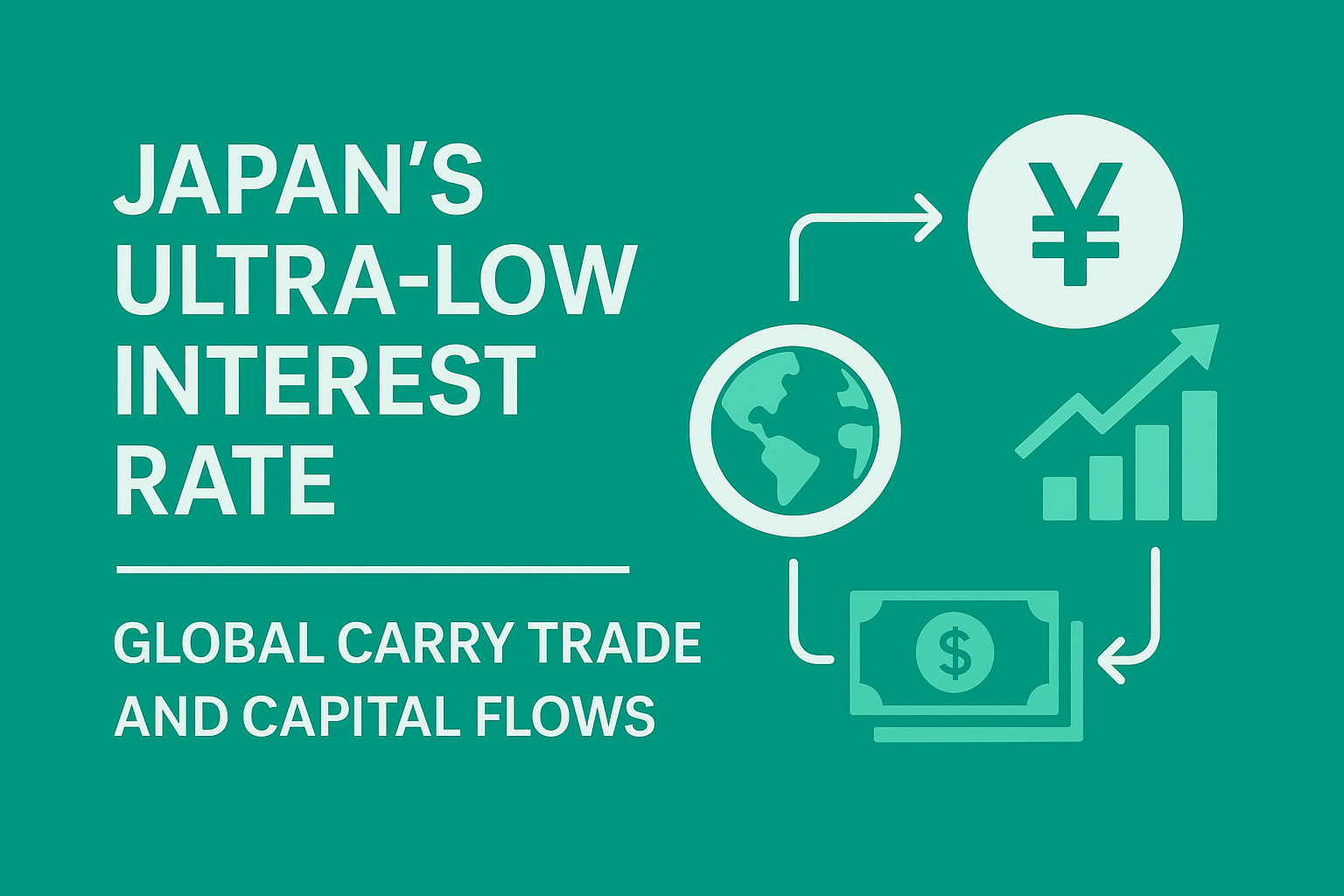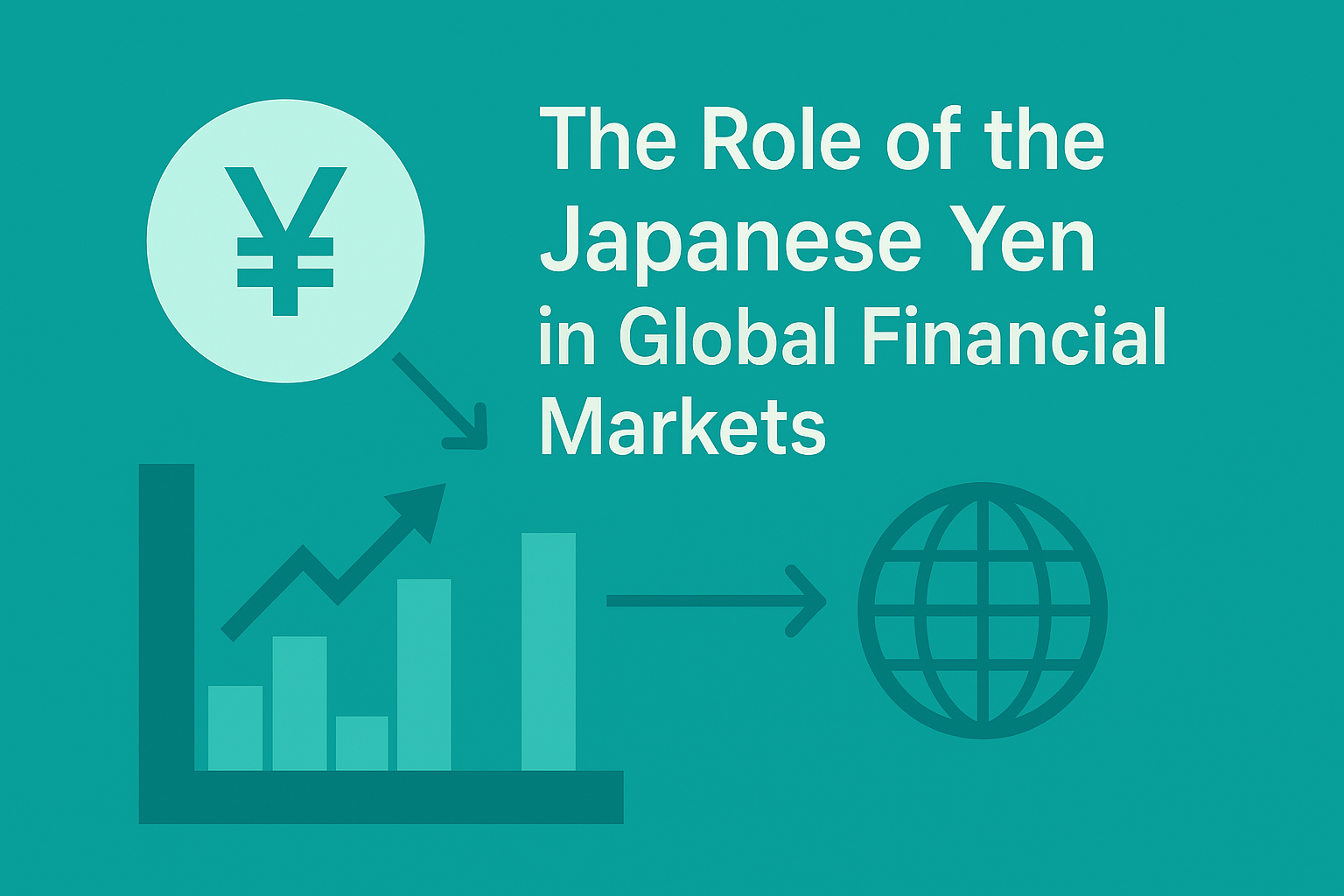— Yen Carry Trade and the Dynamics of Global Financial Markets —
1. Introduction
As of 2025, Japan’s policy interest rate remains the lowest among advanced economies.
This ultra-low rate stems from domestic structural factors—persistent deflationary pressures, slow economic growth, and demographic challenges—but it also cements the Japanese yen’s status as one of the world’s primary funding currencies in global financial markets.
This report examines how Japan’s low interest rate shapes global capital flows, with a focus on the yen carry trade, and outlines the structural implications and policy trade-offs.
2. Domestic Drivers of Japan’s Low Interest Rate
- Persistent Deflation and Low Growth
- After the asset bubble burst in the early 1990s, deflation and sluggish GDP growth persisted for decades.
- Wage growth remains the lowest among major economies, keeping upward pressure on prices weak.
- Demographics and Demand Shortfall
- Rapid aging and a declining working-age population have reduced domestic consumption.
- The savings rate remains high, while corporate and household demand for credit is limited.
- Fiscal Constraints
- Japan’s government debt exceeds 260% of GDP.
- Significant rate hikes would sharply increase debt-servicing costs, constraining fiscal sustainability.
3. The Yen’s Role in Global Financial Markets
(1) A Fixed Position as a Funding Currency
- From 2022 to 2024, the U.S.–Japan interest rate differential widened to nearly 5%, prompting global investors to borrow yen at near-zero cost and invest in higher-yielding currencies.
- Targets included U.S. Treasuries, Mexican government bonds, commodity-linked equities, emerging market bonds, and commodities.
(2) Capital Flow in Risk-On Environments
- Borrow yen from Japanese financial institutions at low interest rates.
- Convert yen into higher-yielding currencies (USD, AUD, MXN, etc.).
- Invest in bonds, equities, or commodities in those markets.
- Reconvert profits into yen for repayment—profitable as long as the yen does not strengthen sharply.
(3) The Reverse Flow in Risk-Off Periods
- In times of global stress, investors unwind positions and buy back yen, often triggering sharp yen appreciation.
- Historical examples: 2008 Global Financial Crisis, 2011 European Debt Crisis.
4. Comparison with the Swiss Franc
| Feature | Japanese Yen (JPY) | Swiss Franc (CHF) |
|---|---|---|
| Primary Users | Global hedge funds, U.S. investment banks | European banks, institutional investors |
| Main Investment Targets | U.S. Treasuries, EM bonds, commodity equities | European bonds, U.S. Treasuries |
| Risk-Off Reaction | Sharp yen appreciation | Sharp franc appreciation |
| Currency Image | Low-yield funding currency, “fuel” for global risk assets | Safe-haven currency, capital refuge |
5. Indirect Pressure from Global Financial Markets
- FX Market Pressure
- Excessive yen depreciation raises import costs, fueling domestic inflation and increasing political pressure on the Bank of Japan (BoJ) to tighten policy.
- Bond Market Challenges
- When long-term JGB yields approach the upper limit of BoJ’s yield curve control (YCC), global investors test the bank’s resolve with speculative selling.
- Pricing in Policy Normalization
- Markets often assume that prolonged rate differentials are unsustainable and position in anticipation of eventual BoJ hikes.
6. The Policy Dilemma
- Benefits of Rate Hikes
- Eases yen depreciation pressure.
- Curtails capital outflows driven by carry trades.
- Costs of Rate Hikes
- Higher debt-servicing costs for the government.
- Increased borrowing costs for households and businesses, potentially slowing the economy.
- The BoJ faces a structural trade-off between tolerating yen weakness and protecting domestic economic stability.
7. Outlook
- In the short term, as long as U.S. and European rates remain elevated, yen carry trades will persist, keeping the yen under depreciation pressure.
- Over the medium term, if domestic inflation and wage growth stabilize, the BoJ will gain more room to gradually raise rates.
- However, unless global funding structures shift, Japan will likely remain a key liquidity provider to international markets.
8. Conclusion
Japan’s ultra-low interest rate is not merely a domestic policy choice—it is a structural element of global capital markets.
The yen carry trade enhances liquidity in global risk assets but also amplifies volatility during crises.
Policy decisions must balance domestic macroeconomic stability with the international repercussions of changes to Japan’s role as a global funding currency.


